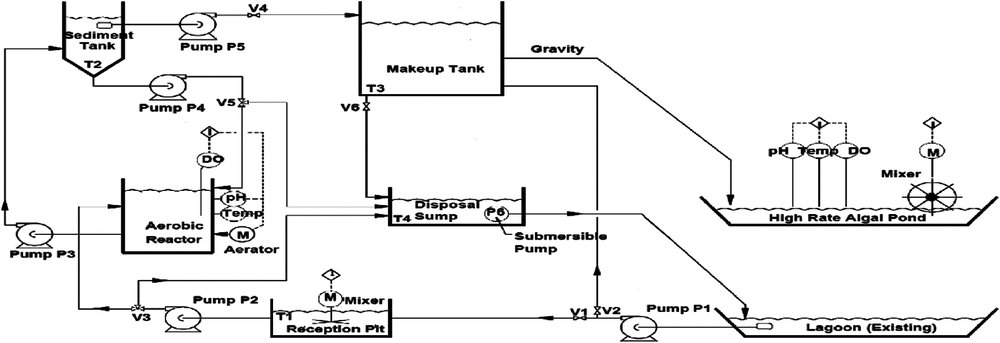Aerobic and algal treatment for piggery effluent and water reuse: design of an integrated wastewater treatment plant
N. N. Cheng A B and H. J. Fallowfield AA Flinders University, Bedford Park, SA 5042.
B Corresponding author. Email: ryan.cheng@flinders.edu.au
Animal Production Science 57(12) 2479-2479 https://doi.org/10.1071/ANv57n12Ab075
Published: 20 November 2017
Anaerobically digested piggery effluent (ADPE) has high ammonia (NH3) and suspended solids concentration, which precludes using it as a substrate for the growth of most microalgae for effluent treatment, disinfection and sustainable biomass energy production. Concentrations of NH3 of 3630 ± 1250 mg NH3-N/L, chemical oxygen demand 8933 mg/L (Hu et al. 2013), and phosphate levels of 620 mg/L (Olguín et al. 2003) have been reported in ADPE. In the absence of oxidation of ammonium-N (NH4+-N) to nitrate (NO3−), some dilution will always be needed if used for algae culture. A recent review (Buchanan et al. 2013) recommended using an integrated wastewater treatment approach that incorporates a nitrifying aerobic treatment step to reduce the NH4+ concentration in the effluent without dilution thereby promoting algal growth for biomass energy production, to likely reduce greenhouse gas (GHG) emissions. The proposed integrated system also has the potential to increase pig productivity and profitability via improving the quality of effluent reused in piggery operations. The objective of this project is to construct an integrated on-farm aerobic-algal treatment system and evaluate the performance in terms of biomass energy production, reduced GHG emissions and higher quality effluent for reuse. This research has the potential to improve profitability via increased on-farm bioenergy production, availability of high quality reuse water, improved pig health and reduction in operating costs.
The Roseworthy Piggery in South Australia was chosen for the pilot study and preliminary effluent analyses were conducted to enable design of the integrated wastewater treatment plant (Fig. 1). Anaerobically digested piggery effluent from an existing lagoon is transferred to a reception pit and followed by aerobic reactor at programmed intervals. NH3 is converted to NO3− under aerobic conditions using naturally occurring populations of aerobic nitrifying bacteria. The resulting treated slurry with greatly reduced NH3 load is then pumped into a sedimentation tank where the supernatant liquid phase is delivered to a makeup tank. Finally, effluent from the makeup tank is transferred into high rate algal pond (HRAP) for nutrient removal via growth of the algal biomass. The HRAP is mixed by an eight bladed paddlewheel and its hydraulic residence time is determined by the rate of slurry addition and/or change in HRAP depth (maximum operating depth 0.5 m). Treated HRAP effluent is returned to sump and then to anaerobic pond before land spreading. Through this direct demonstration, farmers can form an opinion about the feasibility of implementing an integrated waste system to their own operations. An integrated wastewater treatment system offers the potential to treat waste safely and provide additional on farm energy, while reducing GHG emissions and producing high quality water for reuse in piggery operations.

|
References
Buchanan A, Bolton N, Moheimani N, Svoboda I, Grant T, Batten D, Cheng N, Borowitzka M, Fallowfield H (2013) Algae for energy and feed: a wastewater solution. A review (Pork CRC Project 4A–101).Hu B, Zhou W, Min M, Du Z, Chen P, Ma X, Ruan R (2013) Applied Energy 107, 255–263.
| Crossref | GoogleScholarGoogle Scholar |
Olguín E, Galicia S, Mercado G, Pérez T (2003) Journal of Applied Phycology 15, 249–257.
| Crossref | GoogleScholarGoogle Scholar |
Supported by Pork CRC Limited Australia and Flinders University of South Australia.


